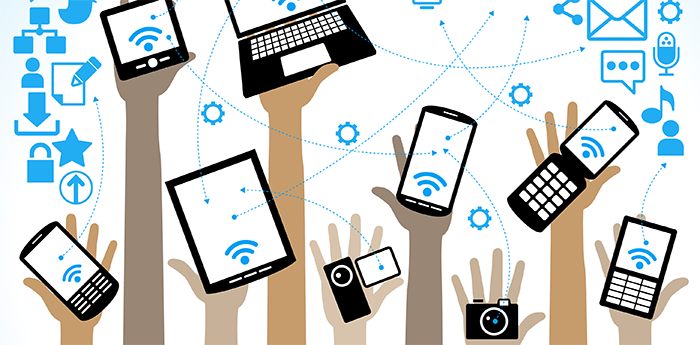How Viewers Engagement Can Make or Break Your Presentation
When you sink considerable time, effort and hope into a presentation, you want your audience to derive genuine value from watching it. It’s not enough to fill seats and have people‘s faces turned toward wherever you’re speaking you need them to pay attention and retain the key points you’re conveying. And that’s no small ask in today‘s highly distractible environment.
In other words, audience engagement alone has the power to make or break the outcome of your presentation. Here’s more on how to determine your audience’s level of involvement, as well as some tips for ramping up engagement.
How Can You Gauge Audience Engagement?
It helps first to understand the signs of engagement vs. disengagement. This will help you identify when you need to reel your audience back in, and assist you in tweaking your presentation so future iterations are even more successful.
Body language conveys volumes. Non-verbal cues are a huge giveaway as to the level of audience engagement. As Trade Show News Network writes, bored audiences may slouch in their seats, fidget and yawn. They’ll probably be slow when the speaker prompts them to take a certain action. Any applause they offer is likely half-hearted. They might even start using their mobile devices to scroll social media, text or check their emails. Rather than taking notes, people might doodle. In certain extreme cases, audience members may doze off or exit the room.
An enraptured audience, on the other hand, will demonstrate engagement through body language. They’ll sit up straighter, focus intently on the speaker and respond to cues on time.
Another giveaway as to an audience’s level of engagement is the quality of questions they ask. If you start the Q&A session and notice people are asking about points you clearly addressed in your presentation, it’s a surefire sign people missed out on these nuggets of info the first time around due to lack of engagement. If you have to clarify points repeatedly or address left-field questions barely tangential to your presentation, you likely fell short of connecting with your audience in a meaningful way. So, it’s time to seriously revamp your approach to presentations.
How Can Speakers Maximize Engagement?
A good rule of thumb is that the more interactive your presentation, the better audience engagement will be. Using an audience response system like Poll Everywhere is one way to make communication a two-way street. Integrating a live poll plug-in into a presentation deck allows speakers to pose questions and empowers audience members to answer in real time using their mobile devices. As you can imagine, getting the audience directly involved in the presentation tends to boost engagement levels especially when they’d otherwise be required to passively absorb information for a long period of time.
Another way to maximize engagement is by incorporating the right visual aids in the optimal places. A PowerPoint presentation is a good start but watching slide after slide transition past can get dull for even the most avid observer. The most memorable presentations tend to also incorporate visual aids like striking images, interesting video clips and well-designed charts/graphs to underscore important takeaways.
All the preparation you’ve put into a presentation will go to waste if its audience fails to engage. Your best bet is boosting interactivity by getting the audience directly involved in what you’re saying, plus ensuring the session is visually interesting. It’s also helpful to know the signs of disengagement so you can get your presentation back on track if you notice people starting to mentally check out of what you’re saying.
Audience engagement means the difference between people leaving having learned something vs. people leaving having “wasted” their time. Always prioritize this factor when you’re putting together a presentation for the best results.


